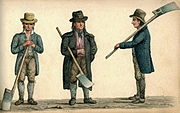
Content moved to:
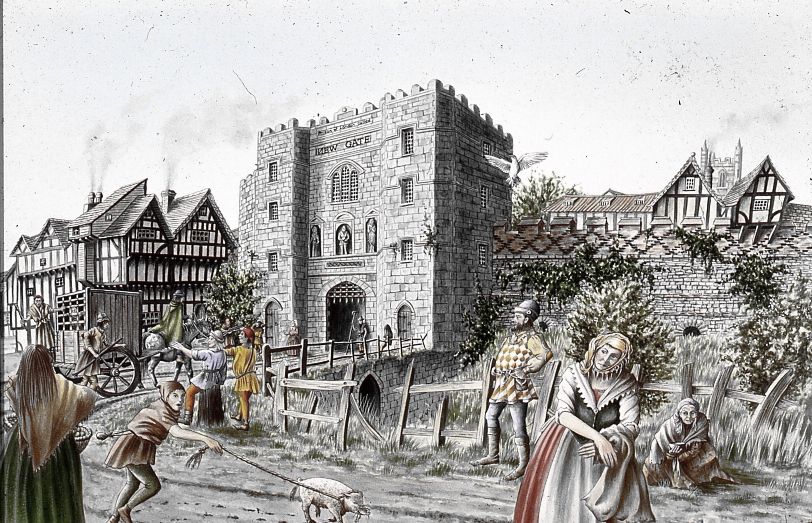
The Past brought to Life

Content moved to:
I have revised and updated three fascinating posts!
The first on the legacy of the Anglo-Saxon princess who changed Scotland when she became Queen.
The second is on the joy the Accession of Queen Elizabeth 1 gave to Protestants, with a description of the martyrdom of Thomas Tomkins of Shoreditch, London.
And perhaps, less earth shattering, some things you might want to know about Sausages.
Almanacs and household guides of the 16th and 17th Century provide a list of seasonal things to do. These posts I have revised and reposted for your updated enjoyment. If you have to choose one, I suggest either the Old Parr post or have a look at the one on exercise, which will give you an excellent idea of early ideas of exercise.
And, finally, someone who survived many, many cold winters. Old Tom Parr:
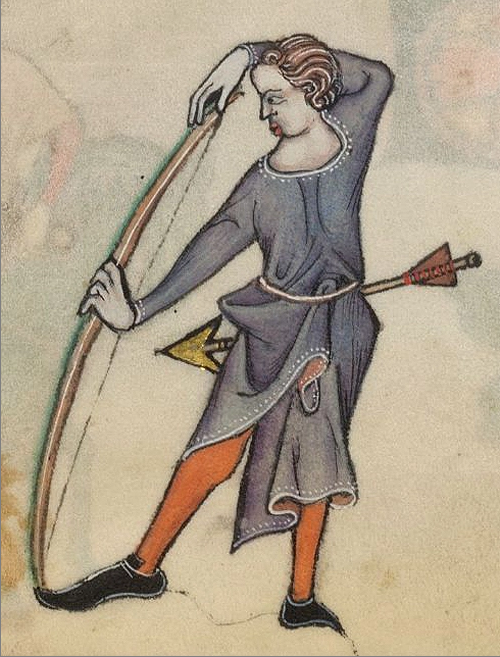
‘Leaping is an exercise very commendable and healthful for the body.’
The Compleat Gentleman 1634
Thomas Fuller in his book published in 1642 says:
Running, Leaping, and Dancing, the descants on the plain song of walking, are all excellent exercises. And yet those are the best recreations which besides refreshing enable, at least dispose, men to some other good ends. Bowling teaches mens hands and eyes Mathematicks, and the rules of Proportion: Swimming hath sav’d many a mans life, when himself hath been both the wares, and the ship: Tilting and Fencing is warre without anger; and manly sports are the Grammer of Military performance. But above all Shooting is a noble recreation…..
‘THE HOLY STATE’ BY THOMAS FULLER, B. D. and Prebendarie of Sarum
Published St Pauls Churchyard 1642
The Holy State is a fascinating book – it provides instruction on how to be the Good Wife; the Good Advocate; the Good King; Bishop etc. etc.; has general rules of behaviour; some case studies of good lives to emulate and discussion of profane states not to emulate.
It can be read online here:
And on November 16th
Foul privies are now to be cleaned.
The chimney all sooty would now be made clean.
Five Hundred Points of Good Husbandry. 1573
Martinmas was a very important part of the medieval Year, marking as it did the end of Summer, and the beginning of Winter.
I have been updating a series of Martinmas posts which you will find below:
And finally, a saintly repost:

Traditionally, Yarrow has a myriad of uses (see thefreedictionary for a comprehensive list). It was used for wounds (aka ‘Soldier’s Woundwort’); staunches nose bleeds (aka ‘Nosebleed’); inflammations …. THE PAGE HAS BEEN TRANSFERRED TO A NEW NOVEMBER 13TH PAGE HERE.
Post First published on 14 November 2022, revised 13 November 2023 and transferred to new page on 13th November 2024

A late warm patch is now often called an ‘Indian Summer’. This term was first used in the United States in the 19th Century and may refer to a warm period in which Indigenous Americans could continue hunting.
Previously, in England, a warm patch in the Autumn was called a ‘St Martin Summer’ or ‘a Halloween Summer.’ St Martin’s Day is the 11th November, and is, in a normal year, the day around when the weather turns to feel wintry.
A warm spell is, in fact beneficial to many plants. The problem comes if it is followed by a quick cold spell. Plants need time to harden off to prepare to face cold weather. A warm winter will also allow a lot of insects to survive and so in the summer plants will be adversely affected by a plague of pests.

Four Hundred and One Years ago, on 8th November in 1623, the First Folio was registered at Stationer’s Hall near the publishing district around St Pauls Cathedral in London. It was actually called:
Mr. William Shakespeare’s Comedies, Histories, & Tragedies
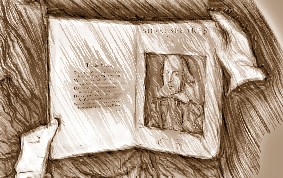
It was put together by his actor friends, John Heminge and Henry Condell seven years after his death, and they wanted to replace all the corrupt editions of his plays and poems that had been
“stol’n and surreptitious copies, maimed and deformed by frauds and stealths of injurious impostors”.
The true texts of his plays and poems “are now offer’d to your view cured, and perfect of their limbes; and all the rest, absolute in their numbers as he conceived them.” Wikipedia
In fact, the plays were ready early as they entered in to the catalogues for the Frankfurt Book festival to appear between April and October 1622,- and how amazing is it that, that festival is still the dream of any aspirant writer?
The First Folio offers plenty of proof that Shakespeare was the author of the plays. He left gold rings of remembrance to Heminge and Condell in his Will. They were part of his Players Company, and had worked together on many of the plays. The Folio has forewords by people extolling the virtues of the writer. Enough proof for any reasonable person.
Heminge and Condell are commemorated in the Garden of St Mary Aldermary behind the Guildhall, where they were Churchwardens, and not far from where Shakespeare was living in 1611. True friends.
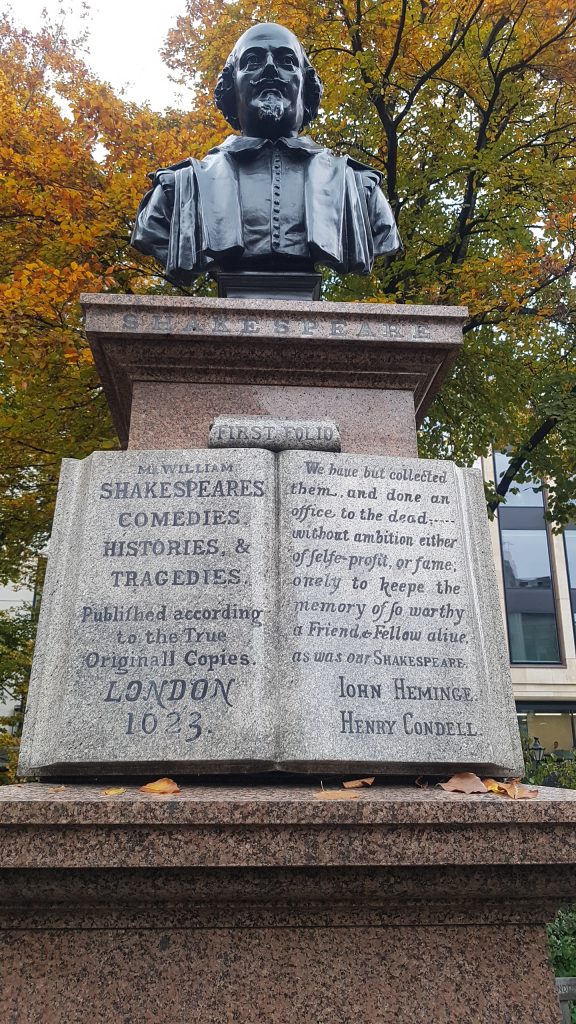
There was a wonderful BBC festival of Shakespeare on in 2023/24 to celebrate. Here:
Intersex Day of Remembrance, also known as Intersex Solidarity Day, is an internationally observed civil awareness day. (Wikipedia).
First Published November 2024, Intersex day added Feb 2025. To be completed November 2025
Recent discoveries from Pompeii are being reported in a timely fashion on an interesting website – one of the recent posts is about the discovery of a Roman Electoral Poster. Please enjoy the read! electoral-inscriptions-discovered-in-pompeii
Below, I enclose a short section of my book ‘In Their Own Words – A Literary Companion To The Origins Of London‘ on Roman Elections, which might be of interest. But first, I have updated and republished my Almanac of the Past Blog posts for November 4th and November 5th, which you can see my following these links:
Extract from ‘In Their Own Words – A Literary Companion To The Origins Of London‘ about Roman Local Politics.
The forum in a Roman town was the central meeting place, used for offices, shops, market, meetings and political elections. Inscriptions show that the Londinium forum was the home of the provincial assembly, and that local government in London continued down to the ward (vicus) level. Surviving political `posters’ and graffiti from Pompeii provides some idea of the concerns of the Roman citizens:
Neighbours! Vote L Status Receptus for duumvir. He is fine. Posted by Aemilius Celer Vicinus.
A Plague on any wretch who scrubs this out!
Vote for M Casellius Marcellus ,a good aedile. He will grant great Games!
Bruttius Balbus for duumvir. Genialis supports him. He will conserve the treasury.
Trebius for aedile! The barbers support him.
M.Cerrinius Vatia for aedile! All night drinkers back him. Vatia for aedile! The pick pockets back him!
Spend for the public welfare! Keep the rates down!
— John Morris,‘londinium’22
A duumvir was the chief magistrate of the town, the equivalent of the Consul in Rome, and he was helped by `junior’ magistrates including aediles. As magistrates, they were expected to fund public works and entertainments from their pocket, so they had to be independently wealthy or backed by wealthy interests.
In addition, a property qualification could be imposed. A surviving charter provides:
A councillor of Tarentum…shall possess a building within the borders of the territory of Tarentum that shall be roofed with no fewer than 1,500 tiles.
Voting was strictly controlled, with returning officers, supervision by independent witnesses, and ballot boxes.
In Their Own Words – A Literary Companion To The Origins Of London‘ D A Horizons, 2009. Kevin Flude
To buy Kindle version click here. To buy paperback click on the paypal link below or email kpflude AT anddidthosefeet.org.uk

I have revised the post on All Souls’ Day. If you follow the link you will read about ‘Souling’, Purgatory, and English, Mexican and Polish Customs for 2nd November.
But this post is prompted by an interesting article in the Guardian about the Dinorwig Power Station in North Wales. It’s a place I visit regularly. The photograph is from a Medieval Welsh Castle, Dobaldarn Castle, near the National Slate Museum in the new Unesco World Heritage Site of the Slate Landscape of North West Wales. The photo above gives an idea of the majesty of the destructive power of quarrying for slate.

The Power Station is remarkable. It is a huge cavern in the mountain. When the National Grid has a lot of cheap energy, water is pumped to the top, and when electricity is in short supply, the water runs turbines to provide extra power. It is, in effect, a giant battery, and what makes it even more worthy of a part in a James Bond film is that it has the capability of initiating a Black Start to the Grid. If some cosmic catastrophe turns off the entire grid, Dinorwig can restart the Grid.
The article in the Guardian has some great pictures of it and the text is very interesting. You might want to start reading a third of the way down the article which has a long preamble.